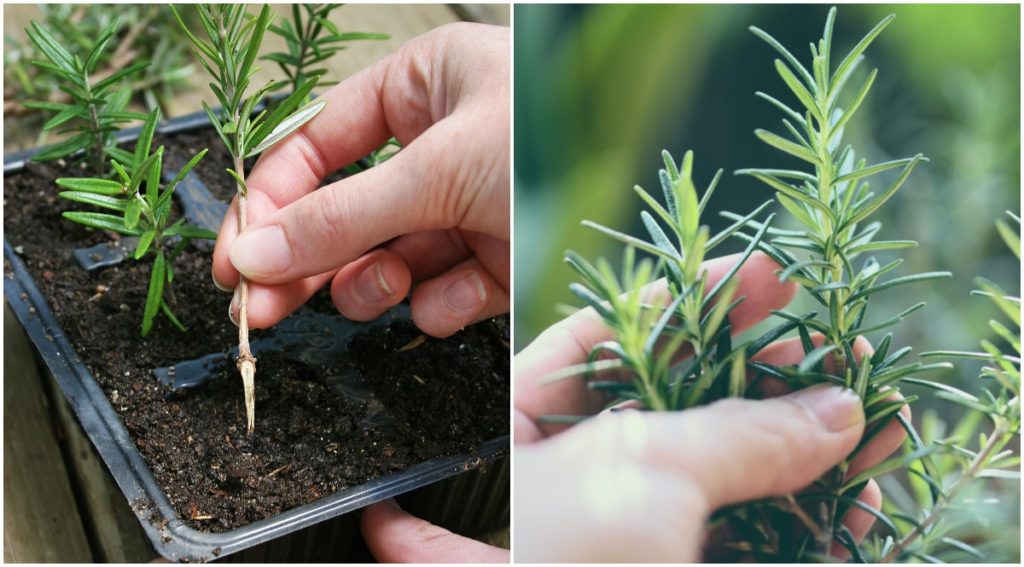
Native to the Mediterranean, rosemary (Rosmarinus officinalis) is a woody perennial herb in the mint family.
The plant’s genus, ros marinus, is derived from Latin and means “dew of the sea”. And indeed, rosemary tends to grow best next to the salty spray of the ocean.

Though rosemary prefers the dry summers and mild winters of the Mediterranean climate, potted plants can be overwintered indoors in cooler climes. A single plant is often more than enough to provide for all your culinary needs.
About the Rosemary Plant…
Intensely fragrant, rosemary is an evergreen shrub with an upright, rounded growth habit. It bears needle-like, grey-green leaves throughout the year and blooms with lovely two-lipped flowers in shades of white, pink, purple, or blue.
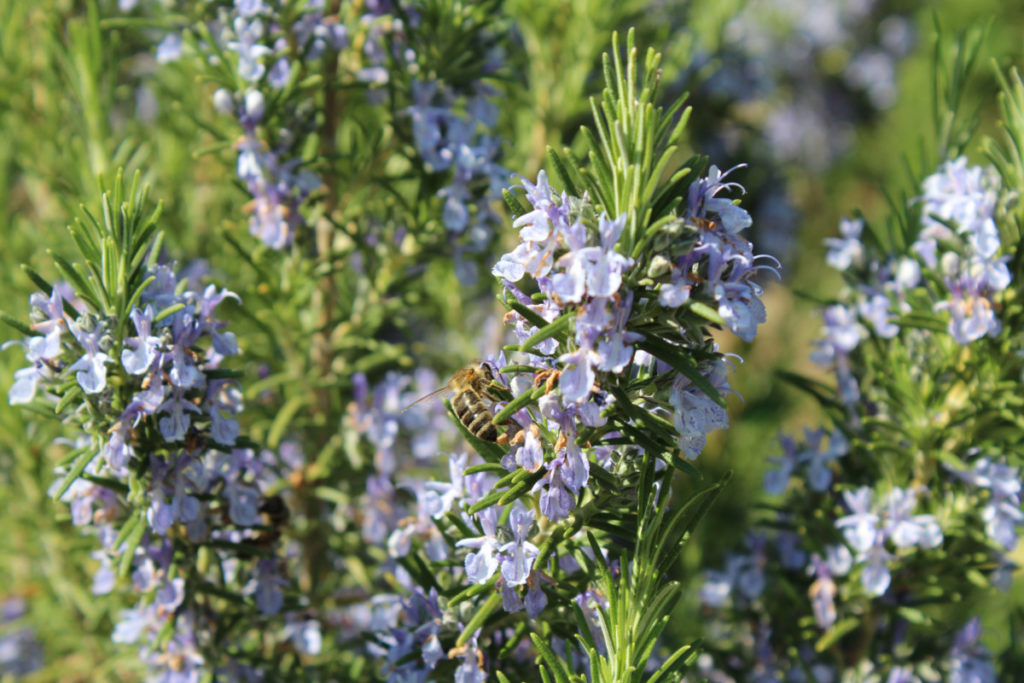
Although its flowers are especially attractive to bees and butterflies, the entire plant emits a sweet, resinous aroma similar to pine.
In warm climates, common rosemary grows to a height of 4 to 6 feet tall and wide and can be used as a low-lying hedge or pruned into topiaries.
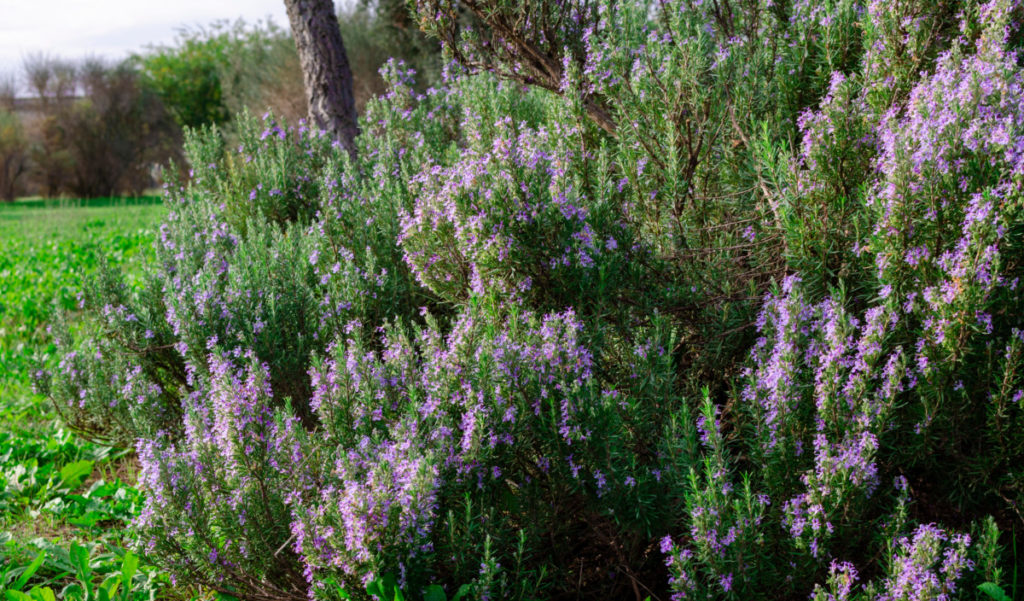
Other varieties include:
- Creeping rosemary – A low-lying evergreen ground cover that looks great in containers and hanging baskets.
- Golden rosemary – More compact than common rosemary, this variety features vibrant yellow foliage in spring and autumn, changing to deep green in summer.
- Arp rosemary – The most cold hardy of all rosemary cultivars, Arp will reportedly survive in zone 6 winters when given protection.
Rosemary Growing Conditions:

Hardiness
Rosemary is winter hardy in USDA zones 8 through 10. Potted plants may be overwintered indoors in a sunny, humid, yet cool, room with good air circulation.
Light Requirements
Although rosemary will tolerate light shade, it does its best in full sun.
Soil
Rosemary prefers slightly acidic, well-drained, loamy soil. Avoid planting in areas with heavy clay soil as the lack of drainage will likely kill the plants.
Watering
Rosemary is very drought tolerant. Allow the top of the soil to dry between waterings since overwatering this herb will likely lead to root rot.
Fertilizer
Rosemary isn’t a heavy feeder and typically doesn’t need fertilizer to thrive. If your plants have pale leaves or stunted growth, however, work some compost or alfalfa pellets into the surrounding soil.
Companion Plants
Growing rosemary near beans, carrots, cabbage, kale, broccoli, cauliflower, and other Brassica vegetables will help boost yields while repelling cabbage moth, carrot fly, and bean beetles.
How to Grow Rosemary

From Seed:
Rosemary seeds are quite slow to germinate so it’s best to start your plants indoors about three months before the weather warms up.
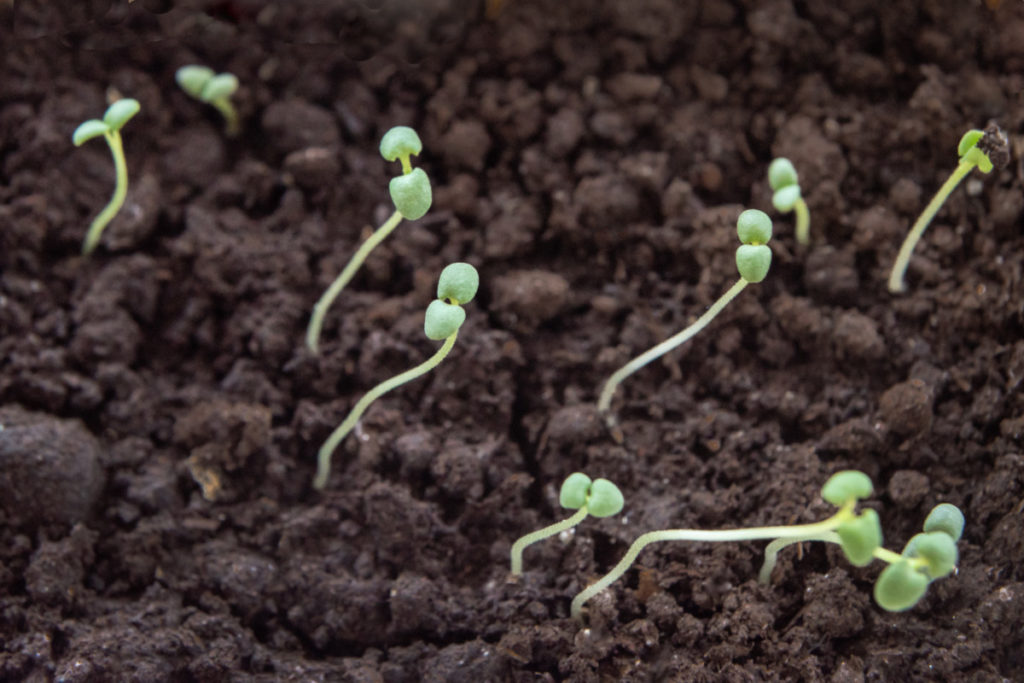
- Set seeds in potting mix, cover with a light dusting of soil, and water gently. Sow more seeds than you require since not all will germinate.
- Cover pots with a humidity tent and place in a warm spot.
- Once seedlings begin to emerge, remove the humidity tent. Place pots in a bright location.
- When rosemary seedlings are about 3 inches tall, begin hardening them off before transplanting to the garden or larger containers.
- When moving plants to the soil, space them 24 to 36 inches apart.
From Cuttings:
If you have an established plant available to you, it’s quick and easy to propagate rosemary from cuttings.
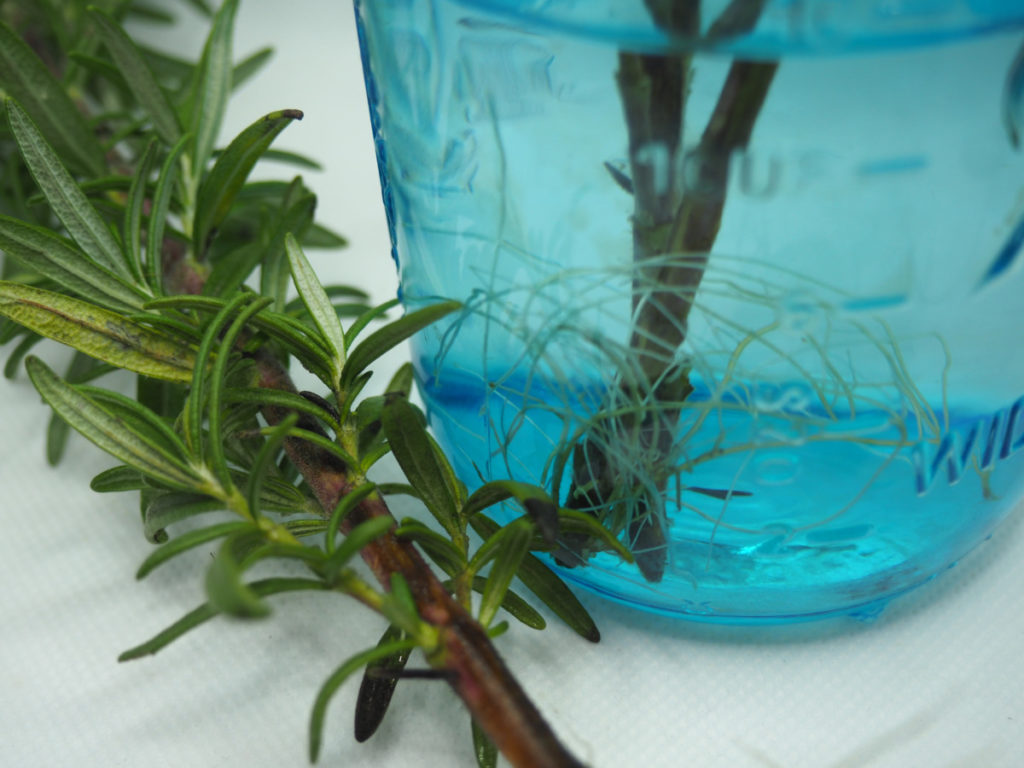
- Take cuttings, a few inches long, from the woody part of the rosemary plant.
- Remove the lower leaves, 2 to 3 inches from the base of the stem.
- Score the stem slightly with a knife or scissors, removing a thin layer of the woody surface to expose the softer inner core. This step will help speed up the rooting process.
- Cut the base of the stem at a 45° angle.
- Place rosemary cuttings in a cup of water and set it in a warm spot with bright, indirect light.
- Replace water as needed.
- After about a month or so, the roots should begin to emerge. Plant your rooted cuttings in nutrient rich soil and water thoroughly.
- Place potted plants in a sunny window (southern or western exposure is best) for a few weeks before hardening them off and transplanting outdoors.
Read Next: 15 Herbs You Can Propagate From Cuttings
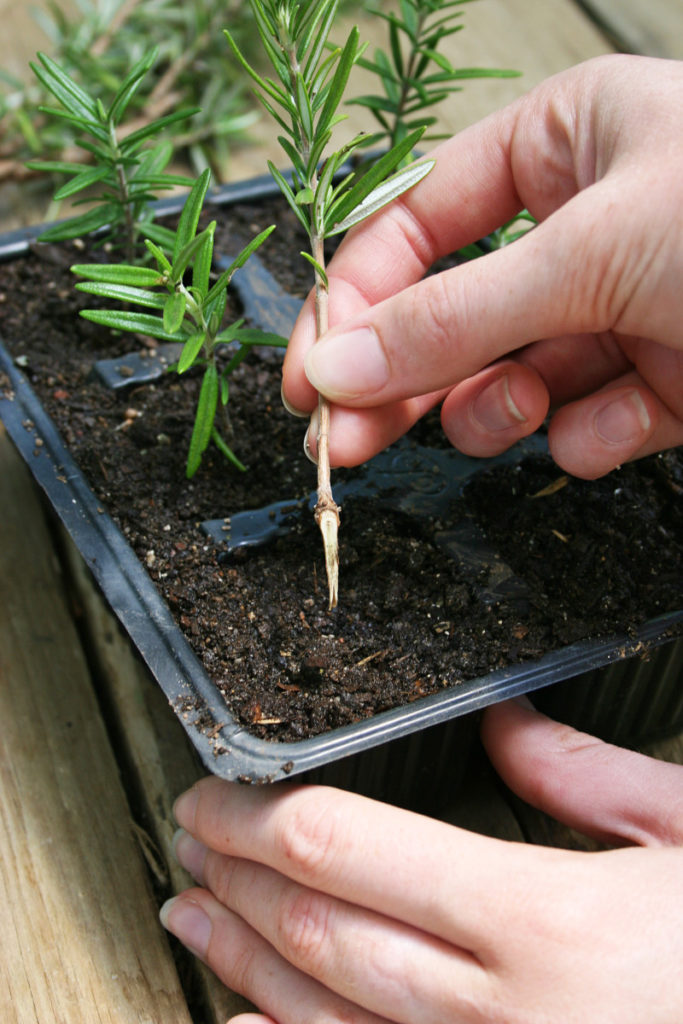
From Starter Plant:
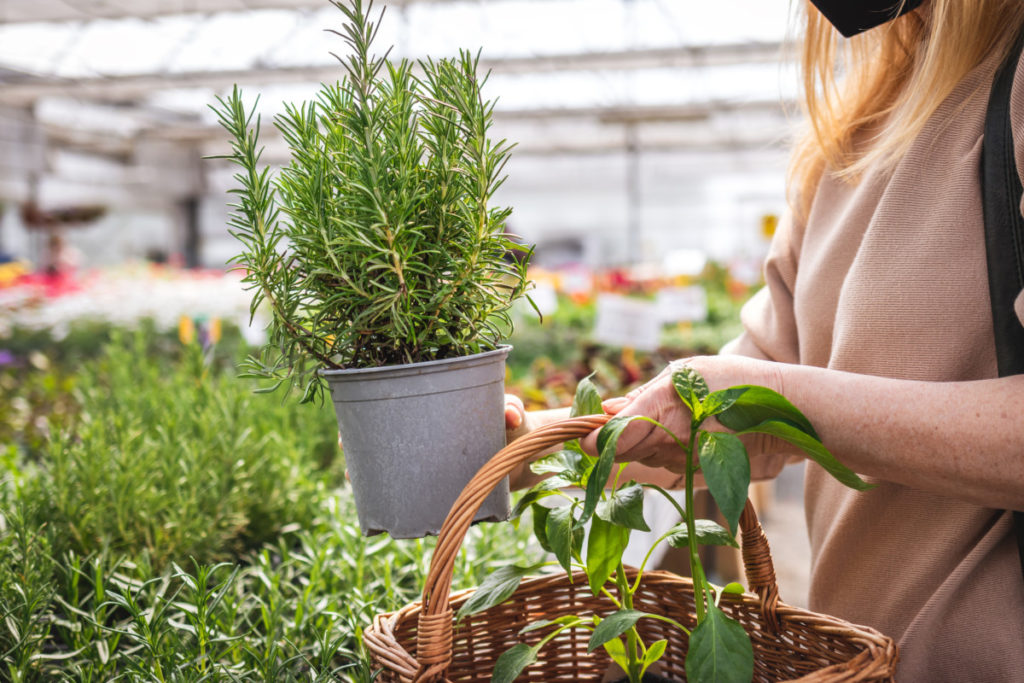
Pick up some rosemary seedlings from a garden center and you can plant them as soon as the soil is at least 70°F. (Or you could try growing the live rosemary plants from the supermarket.)
- Loosen the soil at your chosen planting location, to a depth of about 8 inches.
- Work some compost into the soil.
- Dig out the soil, at the same depth and circumference as the size of the pot the rosemary plant came in.
- Carefully remove the plant from the container and set it in the hole.
- Move the soil back around the plant, gently firming it around the base of the plant.
- Water the plant well, especially the first couple of weeks, to help it become established.
How to Harvest Rosemary
Snip lengths of rosemary anywhere along the stem. Since it will branch off wherever you clip, leave a few inches on the plant to encourage new growth.
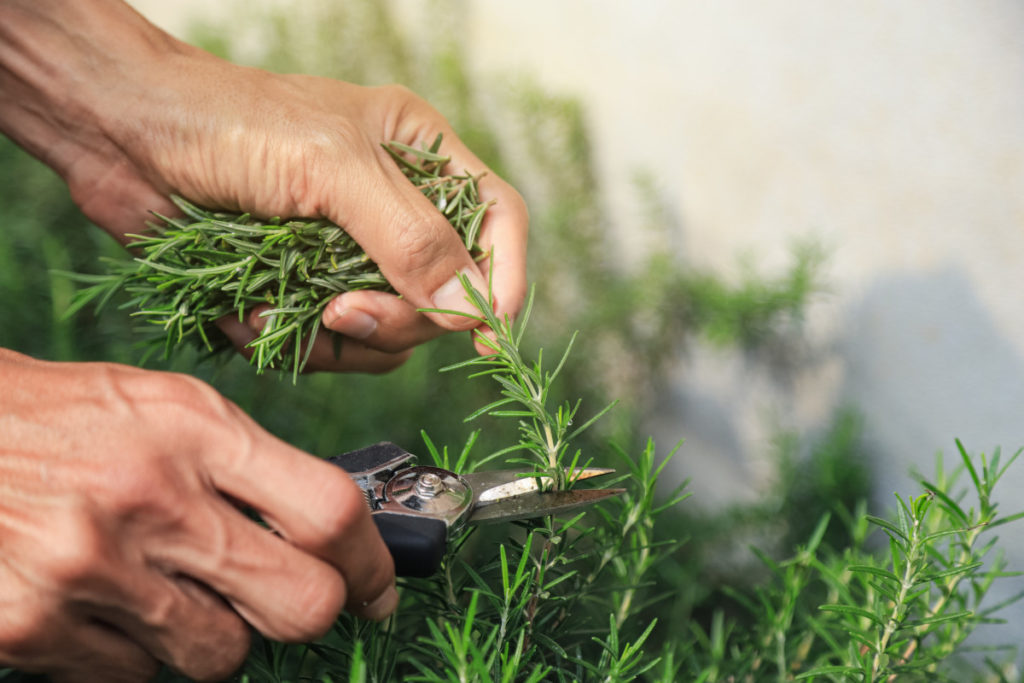
The younger stems and leaves are more aromatic than older growth. You can harvest around one-third of the plant at a time, but be sure to give it time to regrow before taking another helping.
To use rosemary fresh, strip the foliage from the stem and place the leaves in a colander. Give rosemary a good rinse with clean water before using it to season food.
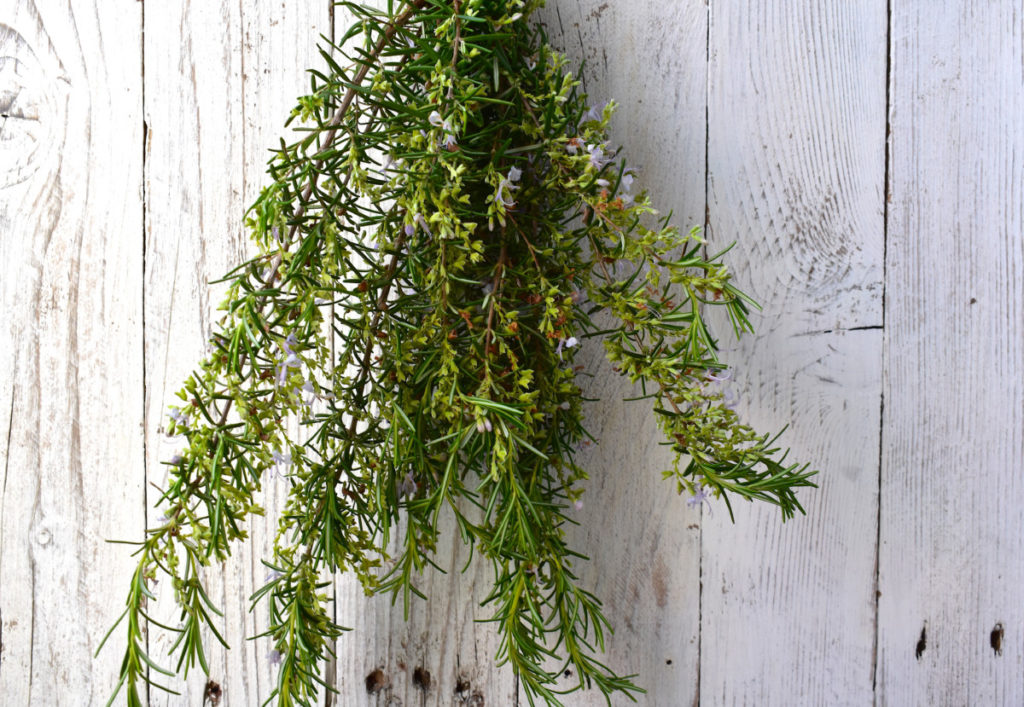
To store rosemary for later use, hang clusters of branches in a warm, dark, and dry spot for a couple of weeks. When they are nice and stiff, remove the leaves and store them in an airtight container.
Rosemary Seed Saving
Although propagation by cutting is the easiest way to multiply rosemary plants, if you live in cooler hardiness zones or haven’t had much luck overwintering mature plants indoors, seed saving is definitely a pennywise technique to ensure you always have an ample supply.
To save seeds, allow the plant to flower. When the blooms turn brown and dry, snip them off the plant and place them in a brown paper bag for two weeks.
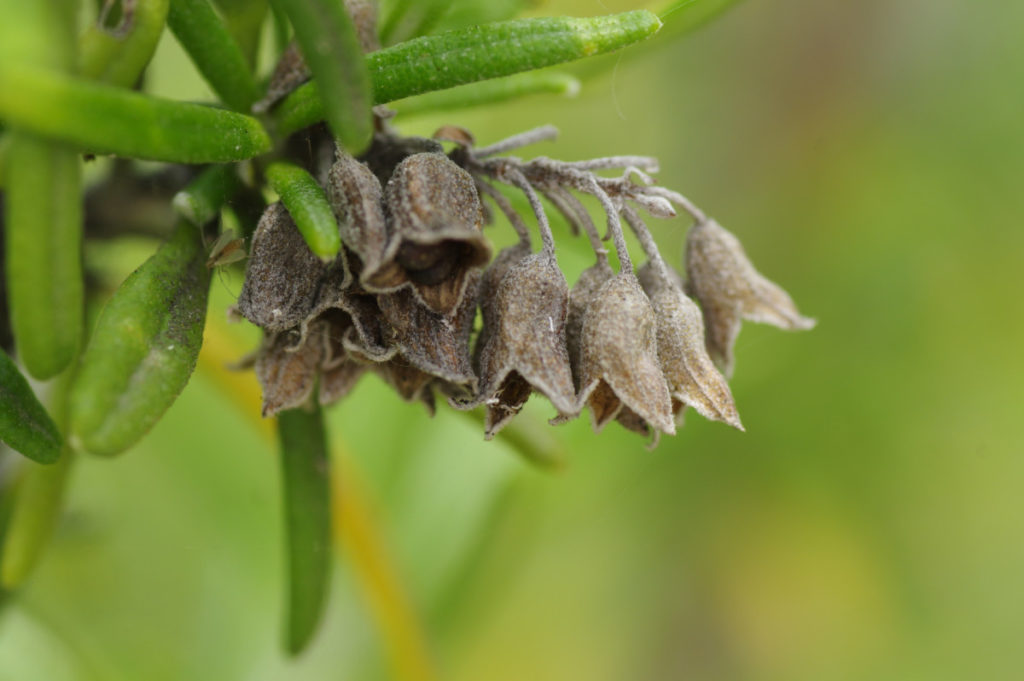
Holding the flowers over the bag, rub them gently to separate the seeds from the chaff. Discard the plant debris and place seeds in a tightly sealed container and store them in a cool, dry location. Seeds should be viable for around one year.
Common Issues:
Powdery Mildew
When rosemary plants are planted too closely together, limiting air circulation, they become much more susceptible to powdery mildew.
Prevent powdery mildew in the first place by pruning plants regularly to increase airflow and spacing them 2 to 3 feet apart.
If your plant already shows signs of this white or grey powder on its foliage, remove all infected parts of the plant with clean shears. Wash and sterilize your hands and tools before handling the plant again.
Give the entire plant a thorough wash with your hose or watering can. Powdery mildew cannot survive when wet, so bathing the leaves and stems with plain water is an effective treatment.
If powdery mildew keeps returning, make a foliar spray using one of these homemade remedies.
Overwintering Indoors
Bringing rosemary plants indoors for the winter can be challenging since the plant is used to basking in the intense summer sun and the breezy airflow of the outdoors.
Rosemary requires at least six hours of sunlight each day to thrive. You may need to add a grow light to ensure your plants are receiving enough light.
Keep humidity levels moderately high by setting plants in naturally humid spots in the home, placing pots atop a pebble tray, or misting the leaves daily with water.
Place rosemary plants in the coolest room in your home. In its native Mediterranean range, rosemary would experience cool days with nights just above freezing during winter. Try to mimic these conditions by keeping rosemary in temperatures that hover around 60°F.
To ensure good air circulation, set up an oscillating fan nearby to simulate a breeze.
Also, be wary of insects hitchhiking on your rosemary plants when you bring them indoors. These include aphids, spider mites, and whiteflies.
As a preventative, mix up an insecticidal spray by combining 1 tablespoon of castile soap with 1 quart of water. Spritz the entire plant thoroughly for the first few weeks to kill off any soft-bodied insects that may have hitched a ride inside.
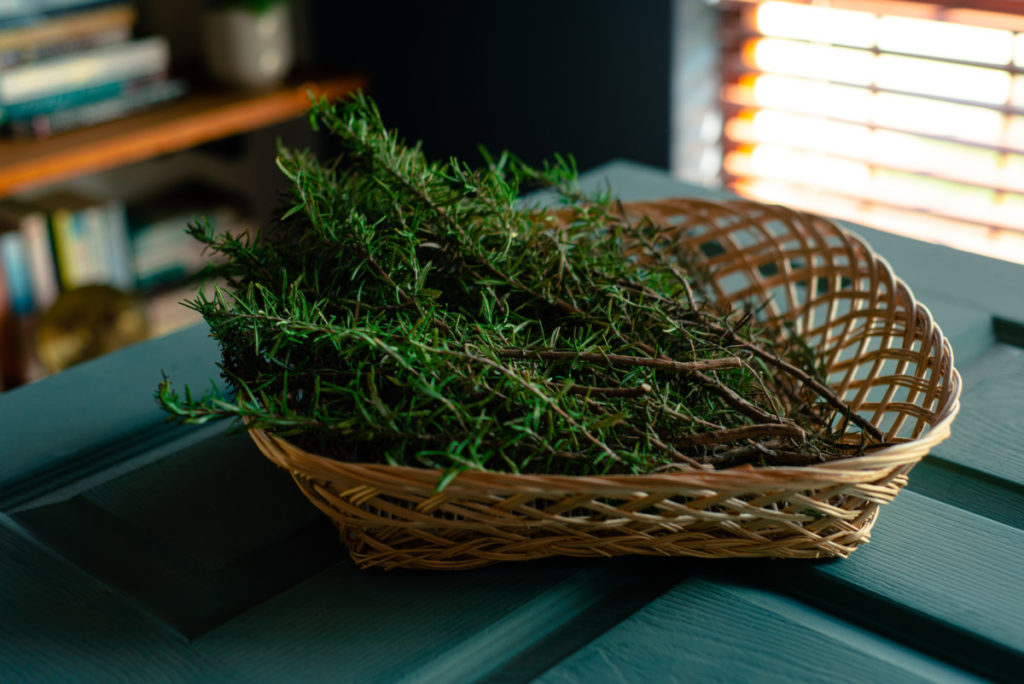
20 Uses for Rosemary
Rosemary isn’t just a good looking plant that smells fantastic! There are plenty of ways to put those fragrant sprigs to good use…
Read Next: 20 Uses for Rosemary
Master another tricky-to-grow Mediterranean plant – Lavender.

Get the famous Rural Sprout newsletter delivered to your inbox.
Join the 50,000+ gardeners who get timely gardening tutorials, tips and tasks delivered direct to their inbox.

